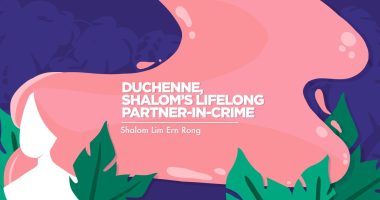DMD mythbusters: Separating fact from fiction
Last updated Aug. 8, 2024, by Susie Strachan

There are many misconceptions about Duchenne muscular dystrophy (DMD) that can make navigating the diagnosis even more overwhelming for people with this progressive condition and their families.
But knowing the facts about DMD can help you better understand the disease so you can feel more in control, maintain your quality of life, and make more informed decisions about treatment options.
Below are some common DMD myths and the truth behind each one.
Myth: DMD affects only males
The facts: It’s not surprising people often think DMD only affects males and DMD in women doesn’t exist.
While it’s true females are more likely to be carriers of the genetic mutation that causes DMD, some girls and women do have symptoms of DMD. It is estimated DMD affects around 1 in 3,500 male births, while fewer than 1 in 1 million girls have the disease.
This is due to DMD’s X-linked recessive inheritance pattern: the DMD gene is located on the X chromosome, one of two sex-determining chromosomes. Males, who have one X and one Y chromosome, are more affected because they lack a second X chromosome to compensate for the mutated gene. Females, who have two X chromosomes, often have milder symptoms or are carriers, as the gene that is healthy can compensate for the mutation.
Other types of muscular dystrophy affect males and females equally, including limb-girdle muscular dystrophy.
Myth: Muscle weakening can’t be stopped
The facts: Over time, DMD causes muscles throughout the body to lose their strength. As your muscles become weaker, you might notice symptoms such as difficulty walking and being more tired than usual.
While the progression of muscle weakness can’t be stopped, it is possible to slow it down. Taking corticosteroids, getting physiotherapy, and for some, trying gene therapy are some ways to potentially help delay the onset of more severe symptoms and muscle loss or atrophy.
Myth: Exercise makes DMD worse
The facts: While intense or strenuous exercise can cause muscle damage and should be avoided, low-impact activity and physical therapy can be beneficial for people with DMD.
Exercising regularly can help maintain muscle strength and improve flexibility and range of motion. Options may include walking in a pool and using a stationary bike.
Myth: Losing weight is good
The facts: Younger people with DMD have a tendency to put on weight, because they are not able to be physically active and are usually taking corticosteroids. For this reason, sometimes weight loss is considered a positive.
But you may develop gastrointestinal issues, especially as you get older. They can lead to malnutrition and unintended weight loss. Even losing 5 pounds may be a sign of a potential problem and should be discussed with your doctor.
You may want to consider speaking with a registered dietitian, who can help you make sure you are eating a well-balanced and nutritious diet.
Myth: DMD affects intelligence
The facts: Many people incorrectly believe having a physical disability means you’re also intellectually disabled. But most people with Duchenne have an IQ that falls in the normal range.
Though some people with DMD may have learning disabilities, other cognitive problems, such as attention-deficit/hyperactivity disorder, autism spectrum disorder, and obsessive-compulsive disorder, may be more common among people with Duchenne. But many people with DMD are academically successful and go on to college.
Work with your school on setting up educational support and accommodations, such as assistive technology and accessible environments.
Myth: DMD dramatically shortens life expectancy
The facts: It’s true that people with DMD have a shorter life expectancy compared with healthy peers.
But advances in medical care and treatment for cardiac and respiratory conditions, along with the introduction of new treatments specific for DMD, have significantly improved life expectancy. Studies report a trend of increasing life expectancy with time.
Myth: DMD can be cured
The facts: Currently, there is no cure for DMD, but earlier and more comprehensive treatment is helping to manage the condition better than it had been in the past.
The current treatment approach focuses on managing symptoms, slowing disease progression, and improving quality of life with medication, physical therapy, and newer treatments such as gene therapy.
Stay up to date with Muscular Dystrophy News Today, which offers the latest news about treatments and clinical trials. It also has resources for community support, columns by people living with DMD, and a guide for caregivers.
You can also check patient advocacy organizations for information, including:
- Muscular Dystrophy Association
- Parent Project Muscular Dystrophy
- CureDuchenne
- Defeat Duchenne Canada.
Muscular Dystrophy News Today is strictly a news and information website about the disease. It does not provide medical advice, diagnosis or treatment. This content is not intended to be a substitute for professional medical advice, diagnosis, or treatment. Always seek the advice of your physician or other qualified health provider with any questions you may have regarding a medical condition. Never disregard professional medical advice or delay in seeking it because of something you have read on this website.
Recent Posts
Related articles






